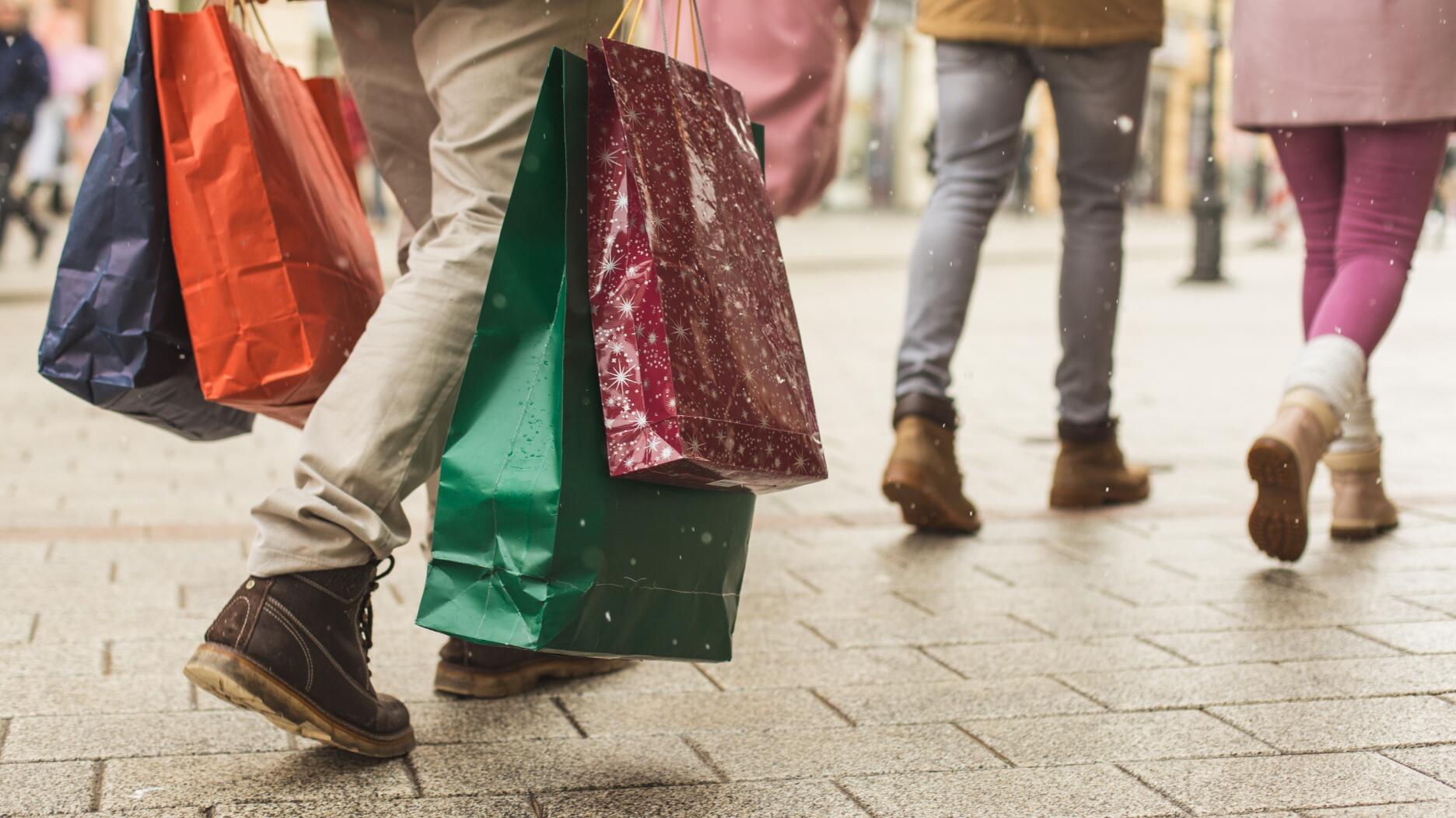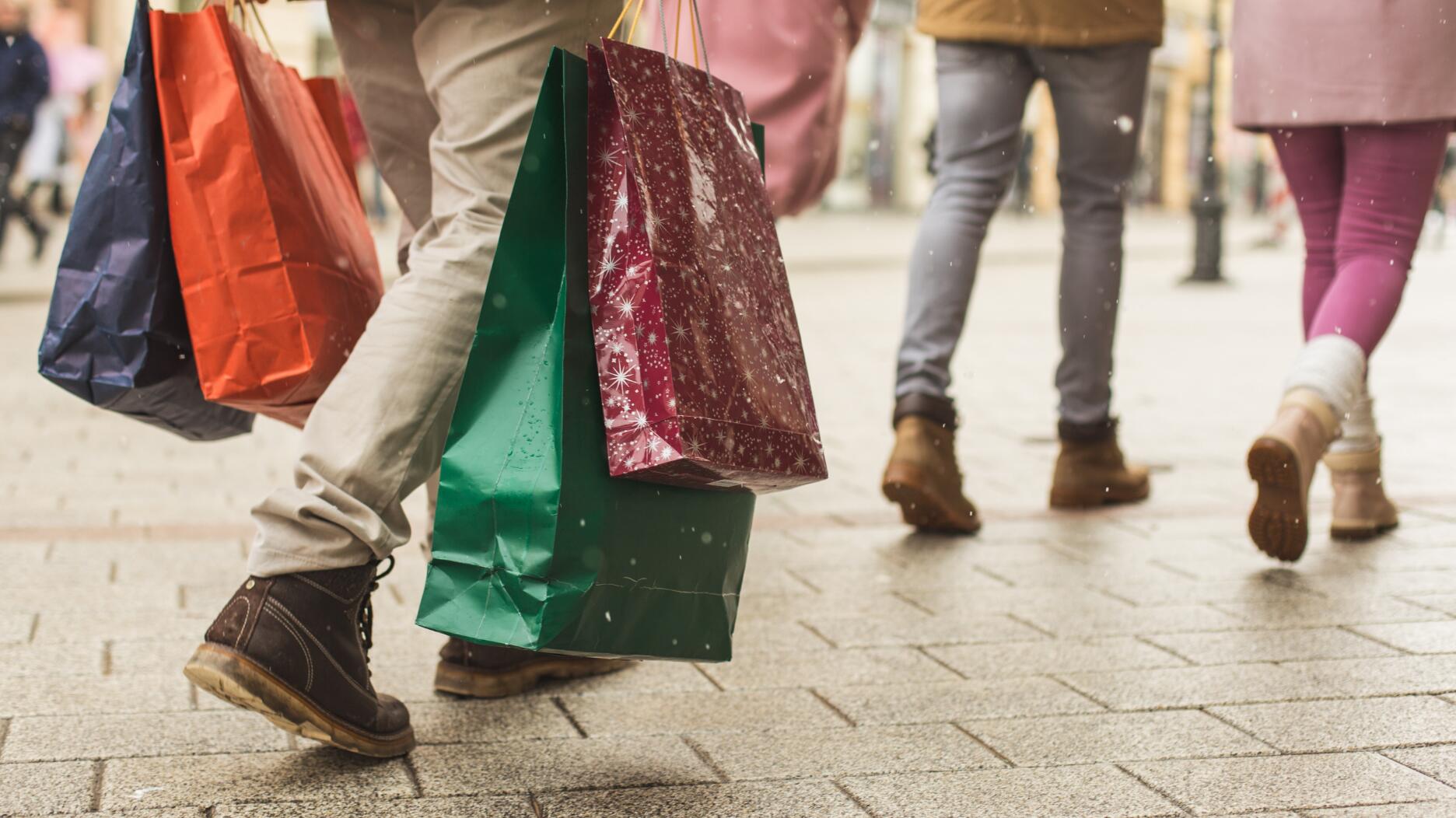“Bridgerton” actresses Hannah Dodd and Claudia Jessie star in the brand’s “Rules to Love By” campaign.
Why Omnichannel Retail is Key to Success in 2017
According to Fitch Ratings and the Harvard Business Review, a combination of online and in-store sales will make all the difference in the year ahead.

New York--Analysts agree that an omnichannel approach to retail is integral to success in 2017.
According to global credit rating and research firm Fitch Ratings, U.S. retail sales, excluding automobiles and gasoline, will increase 3 to 4 percent this year, with more than half of that growth concentrated online and about 1 percent of it relegated to in-store sales.
David Silverman, Senior Director, U.S. Corporates at Fitch Group, explained in the 2017 outlook report, “Spending focus on services and experiences appears here to stay, so the dividing line between best-in-class retailers and market share donors is increasingly going to be determined by which retailers can cater to the evolving landscape.”
He continued, “Those that find success have invested in the omnichannel model and have differentiated their products and customer service to draw customers in.”
A recent Harvard Business Review (HBR) study shed similar light on the importance of omnichannel retail.
The HBR tracked 46,000 consumers who made a purchase between the 14-month period of June 2015 and August 2016.
Of the participants, 73 percent were omnichannel customers who shopped both in-store and online, while 20 percent shopped only in-store and 7 percent only online.
The study found that the omnichannel customers were using multiple technological tools provided by retailers, referred to as touchpoints.
Examples of different touchpoints include ordering a product online and picking it up in a store, using a smartphone app to pull up a coupon, or even utilizing in-store tools like interactive catalogs, price-checkers and tablets.
The HBR categorized each of these various touchpoints as separate retail channels.
They concluded that the more channels a customer used, the more they were spending. On average, consumers spent 4 percent more in store and 10 percent more online if they had interacted with multiple channels as opposed to a single channel (only making a purchase online or only making a purchase in-store).
Customers that used four or more channels before making a purchase spent an average of 9 percent more in a store.
“Spending focus on services and experiences appears here to stay, so the dividing line between best-in-class retailers and market share donors is increasingly going to be determined by which retailers can cater to the evolving landscape.”--David Silverman, Fitch Group
The study also showed that rather than perusing merchandise in a store and buying online, it was more common for consumers to compare product online
If customers had conducted online research, whether at a retailer’s website or other websites, prior to a purchase, they typically spent 13 percent more in store.
Retailers See Success
Dallas, Texas-based fine jeweler Ylang 23 opened up shop in 1985 and was an early e-commerce convert, adding their online store to their website in 2001.
Ylang 23 had always taken a multi-channel approach to business, building up store traffic in the 1980s and 1990s through direct mail advertising. Now, the store feels so strongly about their online business that they carry the exact same merchandise online and in-store.
“More often than not, customers will come in having already done a large chunk of pre-shopping online or through our social channels, particularly our Instagram,” Vice President of Business Development Alysa Teichman said.
“We are really finding that our store strengthens our online business and vice versa. It’s nice to have a platform where our customers can shop in their pajamas at home and then get that touch point and excellent customer service we’re known for in-store.”
Harold Stevens Jewelers, located in San Diego, California, opened for business in 1979 and added an online e-commerce site in 2015.
Ryan Krasner, the store’s creative director, emphasized that the site is “still in its infancy,” and only accounts for about 5 percent of total sales, though Krasner is “pursuing different avenues to improve online transactions.”
However, like Ylang 23, many of Harold Stevens Jewelers’ clients have perused the website before coming in to shop.
“In the local market,” he explained, “mainly people are on the website, then come in to physically handle the product and experience it in person.”
Social media channels like Instagram, to which Harold Stevens Jewelers pays special attention, given the visual nature of the platform, also play a big part in drawing in foot traffic.
“(Customers) check out all channels if they’re interested,” Krasner said.
Even some new retailers that began as e-commerce-only businesses are embracing the omnichannel approach.
Goldyn, a store that sells women’s and men’s apparel plus fine jewelry by brands like Communion by Joy and Selin Kent, is a product of the digital age. The store launched in 2007 as an online-only retailer.
“Fine jewelry is particularly important to our online business because there aren’t the issues with fit and feel that you have with apparel,” said Vanessa Barcus, Goldyn’s owner. “I find that customers are not reluctant to buy fine jewelry online, especially if they are already familiar with the designer.”
Barcus had always hoped to have a physical retail space as well, and waited out the first few post-2008 recession years before opening her Denver, Colorado, store in 2011.
“I’d say it’s quite important to have both an online store and brick-and-mortar shop,” Barcus said. “The two really support each other. Especially with fine jewelry purchases, I find that customers have done a lot of research online and have already perused our website before stopping in. Even if the purchase is not made online, having the products there allows the customers to think about the purchase, which can help make the sale for us.
“Or, vice versa, if a customer comes in and sees something they like in the shop, but it’s a bigger purchase and they want to think about it more, our website allows them to purchase it at a later date.”
Barcus said that “a significant volume of overall sales, particularly fine jewelry sales,” are made online.
Like Goldyn, Ylang 23 relies on the synergy between e-commerce and their physical store to keep their customers’ attention in a changing retail landscape.
But even with more focus than ever on all manner of online and digital sales, Ylang 23 is not neglecting their very first retail channel.
“Eventually, we’d like to add other physical retail locations,” Teichman said. “We believe in brick-and-mortar stores. The direct, customer-facing, customer service aspect is just so important to us.”
The Latest

Founded by jeweler and sculptor Ana Khouri, the brand is “expanding the boundaries of what high jewelry can be.”

The jewelry manufacturer and supplier is going with a fiery shade it says symbolizes power and transformation.

How Jewelers of America’s 20 Under 40 are leading to ensure a brighter future for the jewelry industry.

The singer-songwriter will make her debut as the French luxury brand’s new ambassador in a campaign for its “Coco Crush” jewelry line.


The nonprofit’s new president and CEO, Annie Doresca, also began her role this month.

As the shopping mall model evolves and online retail grows, Smith shares his predictions for the future of physical stores.

Roseco’s 704-page catalog showcases new lab-grown diamonds, findings, tools & more—available in print or interactive digital editions.

The trade show is slated for Jan. 31-Feb. 2 at The Lighthouse in New York City's Chelsea neighborhood.

January’s birthstone comes in a rainbow of colors, from the traditional red to orange, purple, and green.

The annual report highlights how it supported communities in areas where natural diamonds are mined, crafted, and sold.

Footage of a fight breaking out in the NYC Diamond District was viewed millions of times on Instagram and Facebook.

The supplier has a curated list of must-have tools for jewelers doing in-house custom work this year.

The Signet Jewelers-owned store, which turned 100 last year, calls its new concept stores “The Edit.”

Linda Coutu is rejoining the precious metals provider as its director of sales.

The governing board welcomed two new members, Claire Scragg and Susan Eisen.

Sparkle with festive diamond jewelry as we celebrate the beginning of 2026.

The master jeweler, Olympian, former senator, and Korean War veteran founded the brand Nighthorse Jewelry.

In its annual report, Pinterest noted an increase in searches for brooches, heirloom jewelry, and ‘80s luxury.

Executive Chairman Richard Baker will take over the role as rumors swirl that a bankruptcy filing is imminent for the troubled retailer.

Mohr had just retired in June after more than two decades as Couture’s retailer liaison.

Shekhar Shah of Real Gems Inc. will serve as president of the Indian Diamond & Colorstone Association in 2026.

This year’s good luck charm features the mythical horse Pegasus, and is our first Piece of the Week of the new year.

Articles about crime, engagement rings, and a necklace worn in the World Series generated the most interest among readers.

As part of the leadership transition, Sherry Smith will take on the role of vice president of coaching strategy and development.

It marks the third time the country has headed the Kimberley Process. Ghana will serve as vice chair.

The new Bulova x Stetson designs highlight two animals often associated with the American West—the bison and the Texas Longhorn.



























